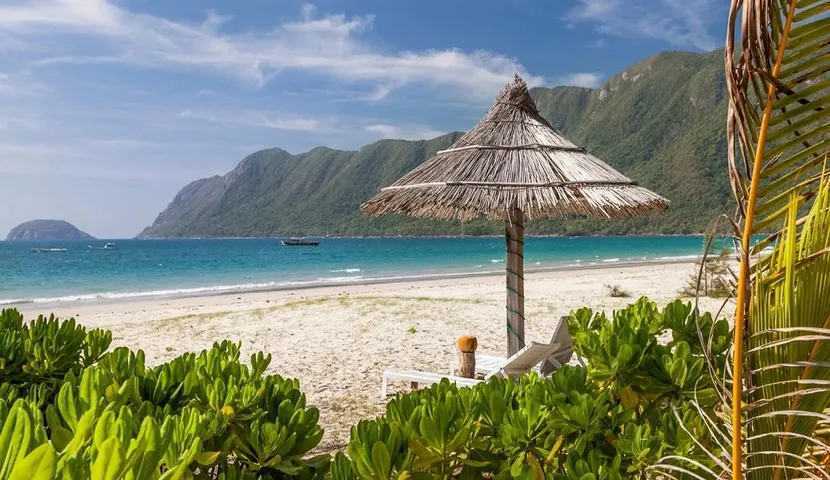Ever get tired of scrolling through travel photos, seeing the same crowded beaches again and again?
I know I do. I often dream of a place where the only footprints in the sand are my own.
The world still holds secrets. Quiet corners and pristine shores are waiting for us.
This guide is your map to them. I’m sharing my list of 10 hidden islands tourists are yet to discover.
We will journey from Croatia’s military past to Japan’s jungle heart. We will find places that reward the curious traveler.
These are the undiscovered islands that offer true escape.
But before we set sail, here’s a quick look at our destinations. It will help you chart your own course to these incredible places.
Contents
- 1 10 Hidden Islands Tourists Haven’t Found Yet
- 2 1. Vis, Croatia: A Fortress of Serenity in the Adriatic
- 3 2. Sifnos, Greece: The Cycladic Soul Food Haven
- 4 3. The Azores (Flores & Corvo), Portugal: Europe’s Wild Atlantic Frontier
- 5 4. Con Dao Islands, Vietnam: Paradise with a Poignant Past
- 6 5. Lord Howe Island, Australia: A Protected Pacific Eden
- 7 6. Little Corn Island, Nicaragua: The Unspoiled Caribbean Dream
- 8 7. Falkland Islands: A Subantarctic Wildlife Wonderland
- 9 8. Yaeyama Islands (Iriomote & Taketomi), Japan: A Tropical Ryukyu Retreat
- 10 9. Îles de la Madeleine, Canada: Quebec’s Sand-Swept Secret
- 11 10. Dominica: The Caribbean’s Unspoiled Nature Island
- 12 Your Map to the Unforgettable
10 Hidden Islands Tourists Haven’t Found Yet
| Island | Location | Best For | How to Get There |
| Vis | Croatia | History, Caves, Sailing | Ferry from Split |
| Sifnos | Greece | Hiking, Food, Culture | Ferry from Athens |
| The Azores (Flores & Corvo) | Portugal | Dramatic Nature, Hiking | Flight to Ponta Delgada, then inter-island flight/ferry |
| Con Dao | Vietnam | Diving, History, Wildlife | Flight or ferry from Ho Chi Minh City |
| Lord Howe | Australia | Exclusivity, Hiking, Birds | Flight from Sydney |
| Little Corn | Nicaragua | Relaxation, Diving, Culture | Flight to Big Corn, then panga boat |
| Falkland Is. | South Atlantic | Penguin Colonies, Wildlife | Flight from Chile or UK |
| Yaeyama Is. (Iriomote & Taketomi) | Japan | Jungle, Culture, Beaches | Flight to Ishigaki, then ferry |
| Îles de la Madeleine | Canada | Beaches, Scenery, Seafood | Ferry from PEI or flight from Quebec |
| Dominica | Caribbean | Nature, Hiking, Diving | Flight via regional hubs (e.g., Barbados) |
1. Vis, Croatia: A Fortress of Serenity in the Adriatic
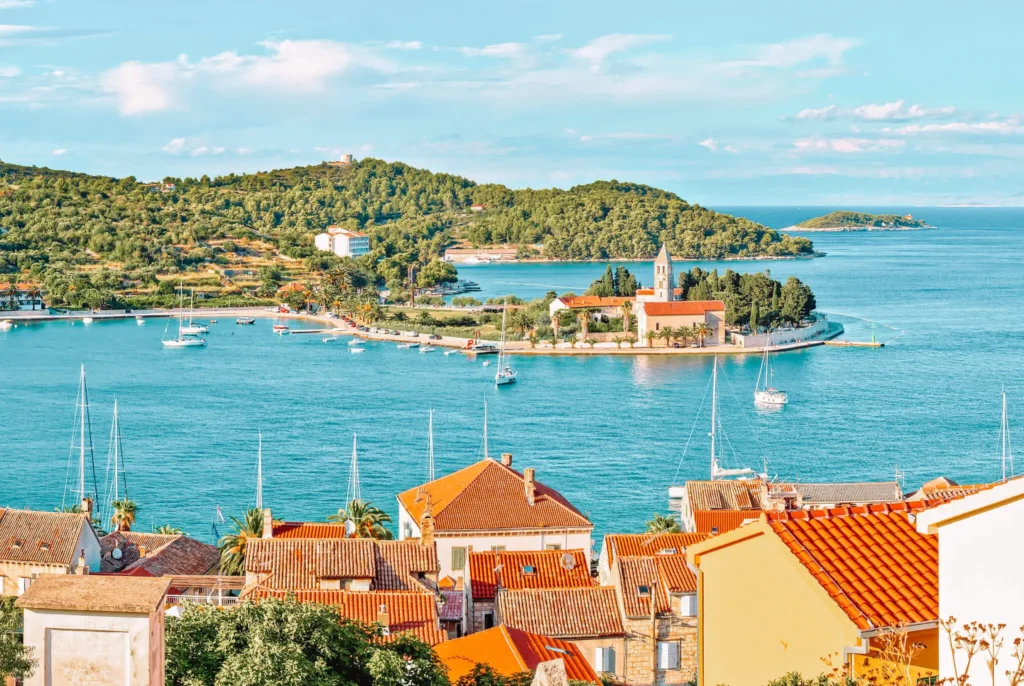
Unveiling One of the Adriatic’s Best-Kept Secluded Islands
For decades, the island served as a Yugoslav military base. It was completely closed to all foreign visitors until 1989. This long period of isolation was an unintentional gift.
While other Croatian islands, such as Hvar and Korčula, saw major tourism development, Vis remained untouched. It was frozen in time.
This history is why it feels so authentic and special today. Its pristine condition is a direct result of being hidden from the world for half a century.
The island’s most famous attraction is the Blue Cave. It is located on the nearby islet of Biševo. On a sunny day, light enters an underwater opening. It fills the cave with an ethereal, glowing blue light.
Taking a small boat into this cavern feels like entering another world. Boat tours depart from the island’s two main towns, Vis Town and Komiža.
Another must-see spot is Stiniva Beach. This pebble cove is dramatically enclosed by towering cliffs. A narrow opening to the sea makes it feel like a secret amphitheater.
The hike down is very steep. Most visitors find it easier to arrive by boat and swim ashore. This only adds to its secluded and exclusive atmosphere.
The island’s military past is also a key attraction. You can take unique tours of abandoned military sites. Explore the massive, hidden submarine tunnel near Vis town.
You can also visit Fort George and other fortresses left behind. This tangible, modern history sets Vis apart from other Mediterranean islands.
- How to Get There: The island is only accessible by ferry from Split. The journey itself acts as a filter, discouraging casual day-trippers and preserving the island’s peaceful vibe.
- Best Time to Visit: The weather is beautiful from late May to early September. For fewer crowds and a more tranquil experience, I recommend visiting in the autumn.
2. Sifnos, Greece: The Cycladic Soul Food Haven
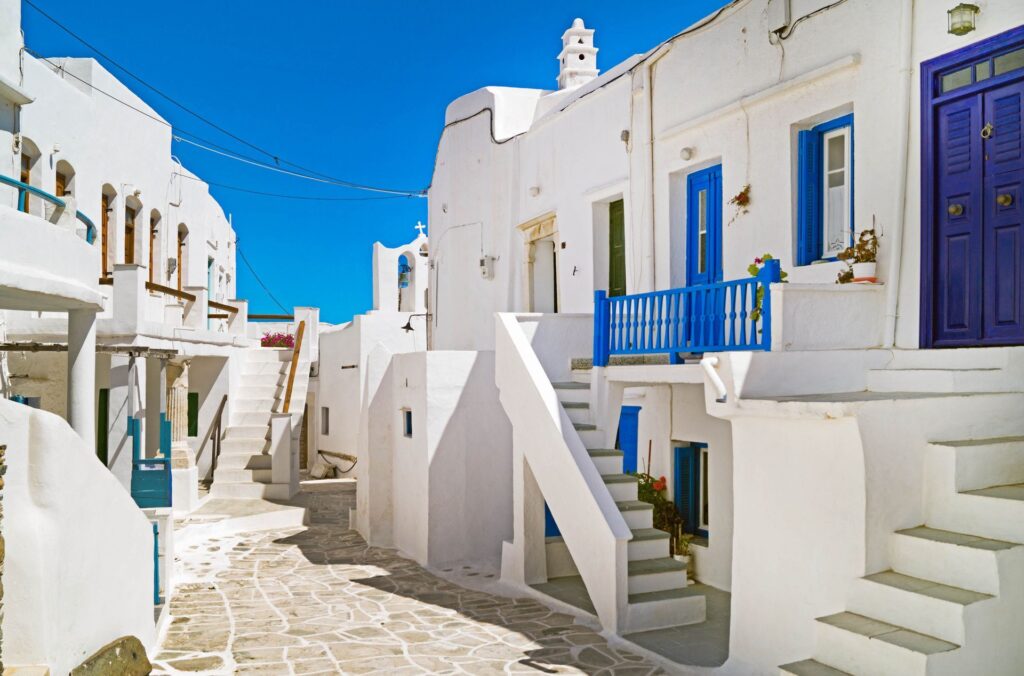
Discovering Authentic Greece on Foot and Fork
Many people dream of a Greek island escape. They picture whitewashed villages and sparkling blue waters. Sifnos offers all of this, but it stands in stark contrast to the crowded party scenes of Mykonos or Santorini.
This is a place for a slower kind of travel. The experience here is built around two pillars: incredible food and world-class hiking.
Sifnos is a paradise for hikers. The island is crisscrossed by Sifnos Trails. This is a network of over 100 kilometers of well-marked paths.
These ancient trails connect traditional villages and remote monasteries. They lead you to secluded beaches you might have all to yourself.
Walking these paths is the best way to truly take in the island’s landscape and heritage. The trails are the heart of the Sifnos experience. They are designed to lead you toward a delicious reward.
A morning hike often ends at a quiet cove with a single, family-run taverna waiting for you. This creates a perfect, slow-paced rhythm for your day.
The island is also a renowned culinary destination. It is the birthplace of Nicholas Tselementes, a famous Greek chef who wrote the first Greek cookbook. You can taste this legacy everywhere. Restaurants like Omega3 and Captain George serve exceptional local dishes.
Sifnian pottery is another ancient tradition. You can visit workshops and buy beautiful, handmade ceramics to take home. Be sure to explore the main villages.
Apollonia is the charming capital, with winding streets and lovely shops. Kastro is a stunning, fortified medieval village perched above the sea. And Faros is a quiet fishing village with beautiful, calm beaches.
- How to Get There: Sifnos has no airport. You can only reach it by ferry from Athens’ Piraeus port. There are also connections from nearby islands like Milos and Paros.
- Best Time to Visit: I suggest visiting in late spring (April-May) or fall (September-October). The weather is perfect for hiking, and the summer crowds are gone.
3. The Azores (Flores & Corvo), Portugal: Europe’s Wild Atlantic Frontier
Where Emerald Peaks Meet the Endless Ocean
Imagine standing on the westernmost edge of Europe. Before you, there is only the vast, wild Atlantic. This is the feeling you get on Flores and Corvo.
These two islands are the most remote of the Azores archipelago. They are not manicured beach resorts. They are raw, untamed landscapes shaped by volcanic fire and ocean winds. A trip here feels less like a vacation and more like an expedition to a lost world.
Flores is known as the “Island of Waterfalls.” Its most iconic sight is Poço da Ribeira do Ferreiro. Here, more than a dozen waterfalls cascade down a towering, velvet-green cliff face into a serene lagoon below. The island is also a hotspot for adventure.
You can go canyoning, rappelling down waterfalls into crystal-clear pools. Or take a boat tour to explore coastal sea caves and waterfalls that plunge directly into the ocean.
The island is also home to seven stunning crater lakes. You can see them by hiking trails that offer breathtaking views of these volcanic calderas.
Corvo is the smallest island in the Azores. It is a tiny, isolated community and a UNESCO Biosphere Reserve. Its main attraction is the Caldeirão. This is a massive, perfectly formed volcanic crater that dominates the island. You can hike down into its green, marshy floor for a truly humbling experience.
Most people visit Corvo as a day trip from Flores. The boat journey between the two islands often includes dolphin and whale sightings. The journey to get here requires effort. The weather can be unpredictable.
- How to Get There: First, fly into a major Azorean airport like Ponta Delgada (PDL) on São Miguel. From there, take an inter-island flight with SATA Air Açores to Flores. Corvo is reached by a 20-minute flight or a boat tour from Flores.
- Best Time to Visit: The summer months from June to September offer the most stable weather. This is crucial for enjoying these remote Atlantic islands and for reliable travel between them.
4. Con Dao Islands, Vietnam: Paradise with a Poignant Past
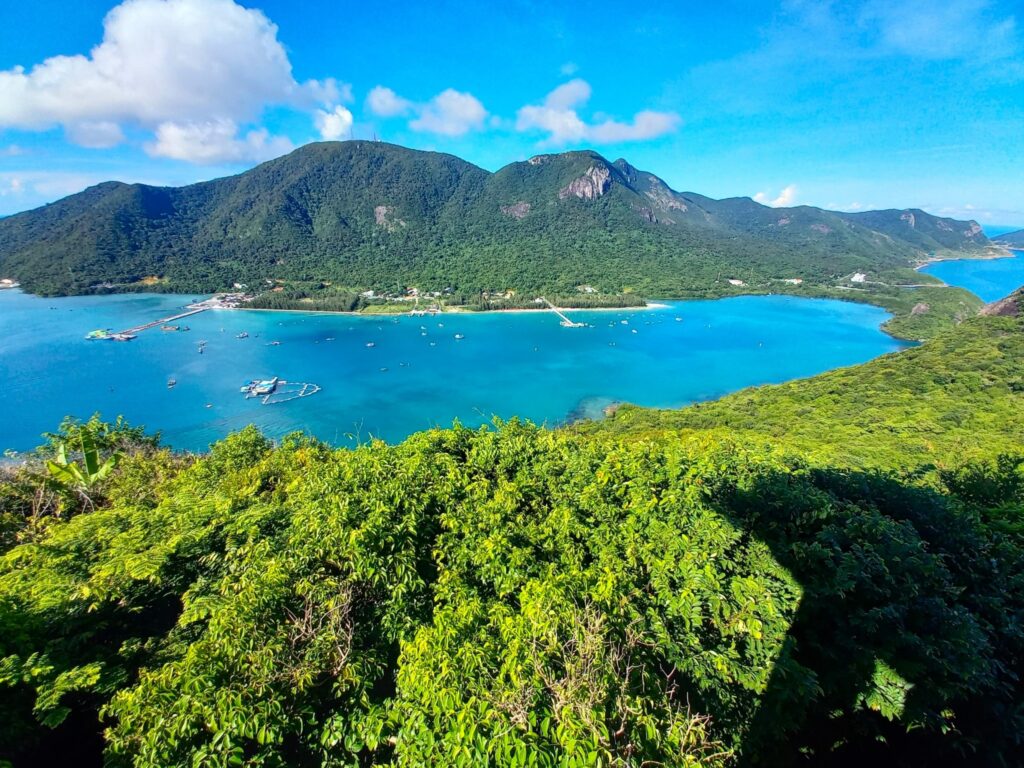
Beauty and History on These Undiscovered Islands
The Con Dao archipelago is a place of stunning contrasts. It is a protected national park with some of Vietnam’s most pristine marine life. Yet, it also holds a dark and tragic history.
For over a century, these beautiful islands were the site of a brutal penal colony. It was known as “hell on earth”. The isolation that made it a feared prison is the very reason its nature is so well-preserved today. This history prevented the development that has changed other coastal areas.
Today, about 80% of the island chain is forested. The surrounding waters are a protected marine park. This makes for some of the best diving and snorkeling in Vietnam. The coral reefs are vibrant and teeming with life. You can see everything from colorful reef fish to larger marine species.
The islands are also a vital nesting ground for green sea turtles. From May to October, you can join a guided tour to watch mother turtles lay their eggs. You might even witness the magical release of hatchlings into the sea.
You can visit the old prison buildings. The infamous “tiger cages” are a chilling reminder of the suffering endured here. These small, open-topped cells exposed prisoners to the elements and brutal torture. The Con Dao Museum provides important context about the island’s past.
After, you can find peace on quiet beaches like Dam Trau or hike through the lush national park trails.
- How to Get There: The easiest way is a short flight from Ho Chi Minh City (SGN). Ferries from Vung Tau or Soc Trang are also an option, but the sea crossing can be very rough.
- Best Time to Visit: The period from March to September offers the calmest seas. This is ideal for diving and coincides with the turtle nesting season.
5. Lord Howe Island, Australia: A Protected Pacific Eden
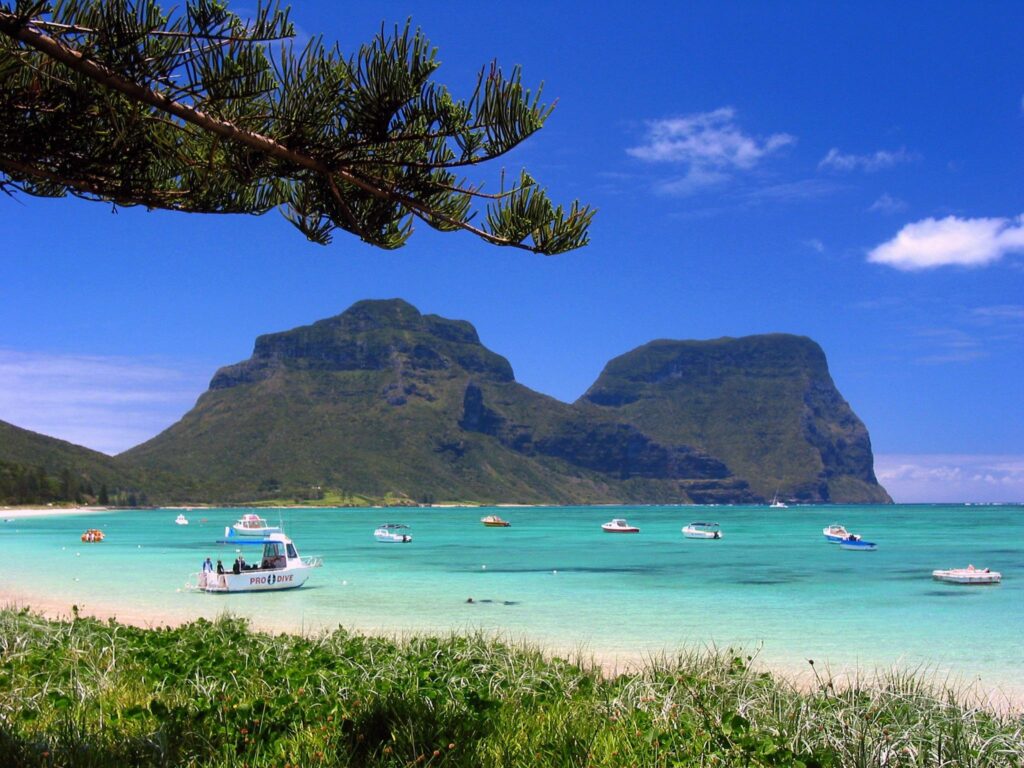
Your Exclusive Invitation to a Natural Masterpiece
Lord Howe Island is hidden by design. This UNESCO World Heritage-listed paradise has a strict policy. Only 400 visitors are allowed on the island at any one time.
This is not due to a lack of appeal or accessibility. It is a conscious choice to preserve its pristine environment. This policy makes a trip here a rare privilege. It guarantees a peaceful, uncrowded experience unlike anywhere else.
This makes it one of the most unique hidden islands tourists are yet to discover.
The island is a haven for nature lovers. It is dominated by the twin peaks of Mount Gower and Mount Lidgbird. The guided, eight-hour trek to the summit of Mount Gower is considered one of the world’s best day hikes. The views from the top are simply breathtaking.
The island is also home to the world’s southernmost coral reef. The waters of its sheltered lagoon are crystal clear and perfect for snorkeling and diving. You can explore vibrant coral gardens and swim with turtles and hundreds of fish species.
Lord Howe is also a premier birdwatching destination. It is a vital breeding ground for millions of seabirds. You can see everything from sooty terns to red-tailed tropicbirds.
Because access is so carefully managed, the island’s delicate ecosystem remains beautifully intact. It is a shining example of how tourism and conservation can work together.
- How to Get There: QantasLink offers daily flights from Sydney, which take under two hours. It is essential to book your accommodation before your flights, as you will need proof of lodging to visit.
- Best Time to Visit: The most popular season is from September to May. The weather is warm and perfect for all outdoor activities. Winter is quieter but still offers a mild and pleasant escape.
6. Little Corn Island, Nicaragua: The Unspoiled Caribbean Dream
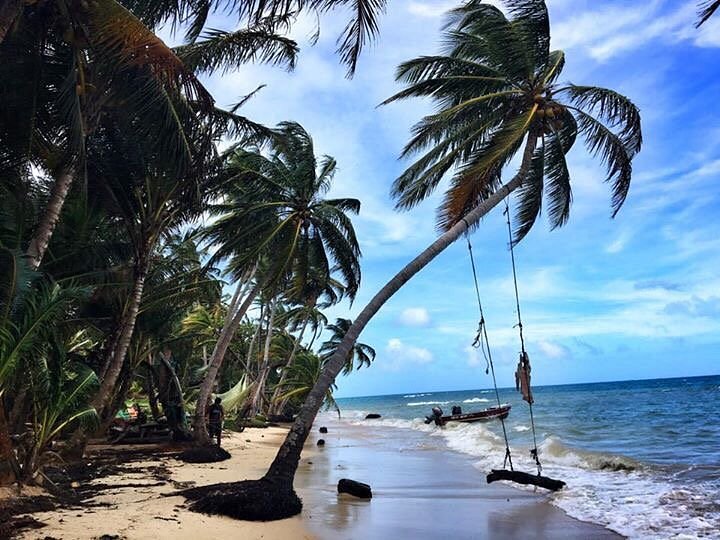
Experience a True Escape on These Secluded Islands
If you dream of an “unplugged” Caribbean, Little Corn Island is your place.
This tiny island off the coast of Nicaragua feels like a step back in time. There are no cars, no large resorts, and no chain restaurants. The only way to get around is on foot along sandy paths. This intentional simplicity is the island’s greatest luxury. It has the “Old-Style Caribbean” vibe that has been lost in so many other places.
Life here moves at a slow, relaxed pace. Days are spent lounging on beautiful beaches like Otto Beach. You can swim and snorkel in the clear, turquoise water. The coral reefs surrounding the island are healthy and vibrant. They are perfect for both snorkeling and diving.
You can hike through the island’s jungle paths. A short trek to the old lighthouse offers panoramic views of the entire island. The island’s culture is also unique. It has a distinct Creole heritage, and English is widely spoken.
The journey to Little Corn is part of the adventure. It requires a bit of effort, which helps keep it off the mass-tourism map. This ensures that the island remains a peaceful haven for those who make the trip.
The lack of modern infrastructure is not a drawback. It allows you to truly disconnect and immerse yourself in the natural beauty and laid-back culture of one of the last authentic spots in the Caribbean.
- How to Get There: First, you must fly from Managua to Big Corn Island on La Costeña airline. From Big Corn, you take a 30-minute panga (an open-air boat) ride across the sea to Little Corn.
- Best Time to Visit: The driest and calmest months are from March to June. This period offers the best weather for beach days and water activities.
7. Falkland Islands: A Subantarctic Wildlife Wonderland
Redefining Paradise at the Edge of the World
When you think of an island paradise, you probably picture palm trees. The Falkland Islands challenge that notion entirely.
This remote, windswept archipelago in the South Atlantic is a different kind of paradise. It is a rugged, wild, and breathtaking haven for wildlife.
For nature lovers, it is one of the most rewarding destinations on the planet. Its isolation has created a sanctuary for millions of seabirds and marine mammals.
The main attraction here is the incredible penguin population. The islands are home to five different species. You can see majestic King penguins at Volunteer Point.
There are also huge colonies of Gentoo, Magellanic, and Southern Rockhopper penguins. You can walk along a beach and find yourself just feet away from thousands of these amazing birds.
Beyond penguins, the islands are a nesting ground for black-browed albatross. Sea lions and massive elephant seals also crowd the shorelines.
The capital, Stanley, is a unique and quirky outpost. It has colorful houses, red phone boxes, and cozy English-style pubs. It feels more like a remote British village than a South American capital.
The islands’ history is also fascinating, particularly the events of the 1982 Falklands War. You can visit battle sites like Mount Tumbledown and various memorials.
A trip to the Falklands is a true adventure. It offers a chance to experience a raw, powerful, and beautiful natural world.
- How to Get There: Getting here requires commitment. The main routes are a weekly LATAM flight from Punta Arenas, Chile, or the UK Ministry of Defence airbridge flight from Brize Norton in England.
- Best Time to Visit: The southern hemisphere’s summer, from October to March, is the best time. The weather is milder, the days are long, and it is the peak of the wildlife breeding season.
8. Yaeyama Islands (Iriomote & Taketomi), Japan: A Tropical Ryukyu Retreat
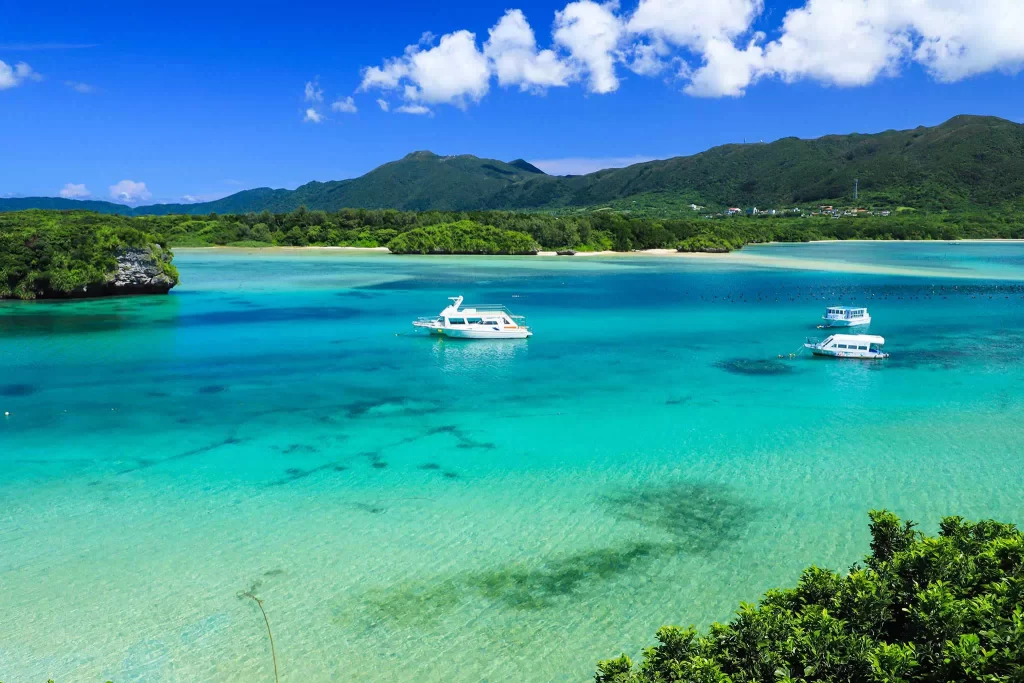
Discovering Japan’s Surprising Southern Paradise
Japan may be known for its bustling cities and ancient temples. But its southernmost reaches hide a tropical secret.
The Yaeyama Islands offer a completely different side of the country. Here you will find lush jungles, coral reefs, and a unique Ryukyu culture.
I want to focus on two contrasting islands: Iriomote and Taketomi. Together, they offer a perfect blend of natural adventure and cultural immersion.
Iriomote is Japan’s wild frontier. Over 90% of the island is covered in dense subtropical jungle and mangrove forests. It is a paradise for adventurers. The best way to explore is by kayaking up its mangrove-lined rivers. You can trek to stunning, secluded waterfalls like Pinaisara Falls, the tallest in Okinawa.
The island is also home to the elusive Iriomote wildcat, a critically endangered species. While you are unlikely to see one, its presence adds to the island’s wild mystique.
Just a short ferry ride away is Taketomi Island. It feels like stepping into a different era. The island is famous for its beautifully preserved Ryukyu village.
The streets are made of white coral sand. The houses are traditional one-story buildings with red-tiled roofs. They are protected by stone walls and shisa lion statues.
The best way to see the village is on a cart pulled by a water buffalo. Your guide will often play traditional songs on a sanshin, an Okinawan instrument.
The island also has beautiful beaches, like Kondoi Beach for swimming and Kaiji Beach, famous for its star-shaped sand.
- How to Get There: The gateway to the Yaeyamas is New Ishigaki Airport (ISG). There are direct flights from major Japanese cities. From Ishigaki’s port, frequent high-speed ferries connect to both Iriomote and Taketomi in under an hour.
- Best Time to Visit: Spring (March-April) and fall (October-November) are ideal. You will enjoy warm weather while avoiding the summer rainy season and the autumn typhoon season.
9. Îles de la Madeleine, Canada: Quebec’s Sand-Swept Secret
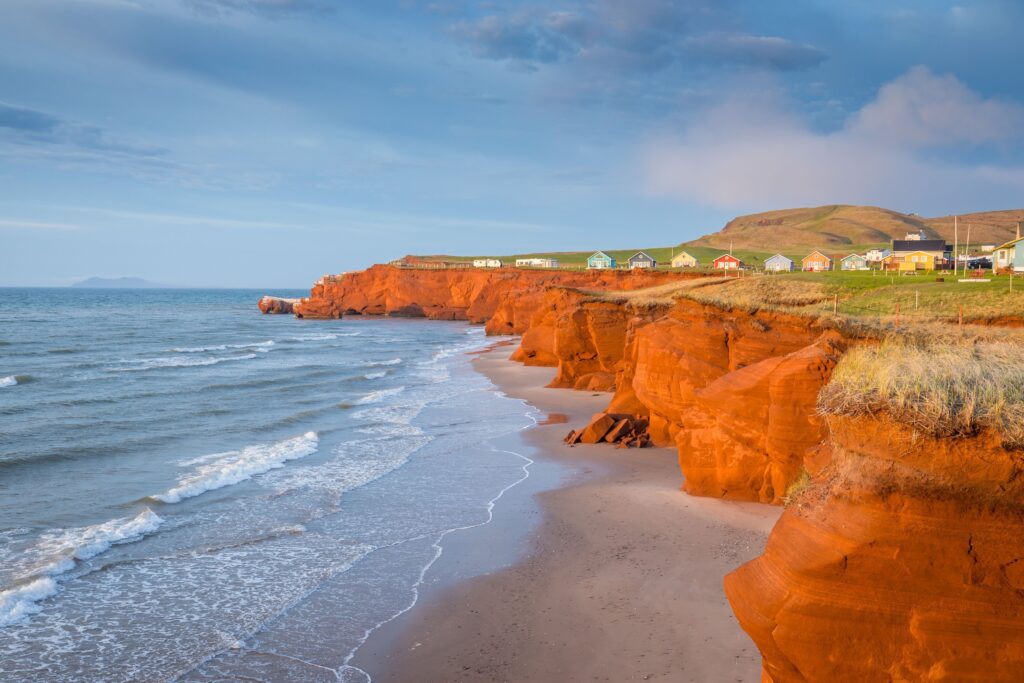
Finding a Slice of Maritime Heaven in Quebec
Hidden in the middle of the Gulf of St. Lawrence is a true gem. The Îles de la Madeleine, or Magdalen Islands, are a stunning archipelago.
They belong to Quebec but feel culturally closer to Canada’s Atlantic provinces. This unique identity has kept them off the mainstream tourist radar. The islands are defined by their dramatic red sandstone cliffs. They are connected by long, windswept dunes and beautiful beaches.
This is a destination for lovers of scenic beauty and the outdoors. The islands boast over 300 kilometers of beaches. Some of the best include Dune du Sud, with its sculpted red cliffs, and Old Harry Beach.
The constant wind makes the islands a world-class destination for kitesurfing and windsurfing.
You can also explore the coastline’s coves and caves by sea kayak. The landscape is dotted with colorful houses and picturesque lighthouses.
The local culture is a highlight. The “Madelinots” are known for their warmth and hospitality. The islands have a fantastic culinary scene. You can enjoy fresh lobster, which is a local specialty. Visit the Fromagerie du Pied-De-Vent for delicious cheese.
Or stop by the À l’Abri de la Tempête microbrewery for a local beer. The islands’ isolation is more cultural than geographic. They prove that you do not have to travel to the ends of the earth to find a place that feels truly undiscovered.
- How to Get There: The most common way is the five-hour CTMA ferry from Souris, Prince Edward Island. This allows you to bring your car. There are also flights from Quebec cities like Montreal and Quebec City.
- Best Time to Visit: Summer (July and August) offers the warmest weather for beach activities. For fewer crowds, consider visiting in late May, June, or September.
10. Dominica: The Caribbean’s Unspoiled Nature Island
An Adventure into the Heart of the Lesser Antilles
Dominica proudly calls itself “The Nature Island.” It is a title it has truly earned.
This is not the Caribbean of sprawling all-inclusive resorts. It is a land of rugged, volcanic peaks and lush, untouched rainforest. Its dramatic geology made it unsuitable for large-scale sugar plantations. This historical fact inadvertently preserved its incredible biodiversity.
The island’s raw, untamed beauty is its greatest attraction. It is a destination for adventurers, hikers, and nature lovers.
The island is home to 365 rivers and countless waterfalls. Some of the most spectacular are Trafalgar Falls and the Emerald Pool.
You can swim in the cool, refreshing water of the Emerald Pool, which is nestled in the forest.
For a truly unique experience, you can hike to the Boiling Lake. This flooded fumarole is the second-largest of its kind in the world. The challenging trek through the Valley of Desolation is a true adventure.
Dominica’s coastline is just as impressive. Champagne Reef is a world-famous snorkeling and diving spot. Geothermal vents on the seafloor release streams of bubbles. Swimming through them feels like being in a glass of champagne.
The island is also known as the whale-watching capital of the Caribbean. Sperm whales reside in its deep coastal waters year-round.
The lack of direct long-haul flights has helped protect Dominica from mass tourism. It remains one of the most pristine and adventurous hidden islands tourists have yet to discover.
- How to Get There: There are no direct flights from the US or Europe. You must connect through regional hubs like Barbados (BGI), Puerto Rico (SJU), or Antigua (ANU) for the final short flight to Dominica (DOM).
- Best Time to Visit: The dry season, from January to May, is the best time to visit. You will find cooler temperatures and less rainfall, which is ideal for hiking and exploring.
Your Map to the Unforgettable
We have traveled the globe in search of true escapes.
We have seen that real paradise is not just about finding a place on a map.
It is about finding a feeling. It is the feeling of solitude on a Croatian beach.
It is the taste of fresh cheese after a hike on a Greek island. It is the awe of watching penguins in the South Atlantic.
These are the experiences that stay with us.
Your own adventure is waiting for you. I hope this guide helps you find one of these hidden islands tourists haven’t found yet. The world is full of wonders beyond the pages of glossy magazines.
Sometimes, the greatest reward comes from taking the path less traveled. The best souvenirs are the stories you bring back from places no one has heard of. Go find yours!
